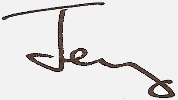Not often do you listen to a lawyer speaking and wish he had talked for longer. But then Andrew Katz is no ordinary lawyer; he’s an open source IP specialist and recently he’s been turning his skills to hardware licensing — notably with the SolderPad and CERN Open Hardware Licenses. I had the pleasure of listening to him speak at the most recent meeting of the UK Open Source Hardware User Group (OSHUG).
Licensing of Open Source Hardware presents a problem. A license gives permission to do something that would otherwise be illegal, and that permission can be given with conditions. So for example, under the law of copyright, it is illegal to copy a document of mine without my permission. I could then give you a license to copy my document, but only on condition that you attribute it to me, don’t change it, and impose the same condition on anyone who copies it from you. This is an example of a simple open source license, the Creative Commons No-Derivatives license.
Open source software has been built on the back of licensing like this, based on the law of copyright— software is regarded legally as being protected by the law of copyright. But this doesn’t work directly for hardware, which is based on manufacturing, not copying text or documents. And this is a problem for many hardware projects. For example open source chip designs have often relied on open source software licenses, such as the GNU Lesser General Public License (LGPL), even though these are explicitly written with software in mind. The result is that community projects intended for sharing can be ruthlessly exploited for private gain by unscrupulous corporations, with nothing given back to the community which developed them.
The solution, adopted by Andrew Katz and others, is to recognize that all open source hardware projects in practice have elements which can be bound by existing design right laws such as copyright. For an open source chip design it might be the Verilog source code or the layout schematics; for an open source car it might be the design drawings. The license can then be attached to these elements — without which the project is useless — and used to impose conditions on those who copy.
This gives a mechanism through which we can create both permissive open source hardware licenses (which place few restrictions on the copier) and copyleft open source hardware licenses (which place more demands on the copier to keep the project open source). The result is a family of three licenses:
- the Solderpad Open Hardware License, which is permissive;
- the CERN Open Hardware License, which is copyleft; and
- the TAPR Open Hardware License, which is strongly copyleft.
The Solderpad license is an Apache derivative, the change being to specify intellectual property rights (IPR) of hardware design artifacts such as bitstreams and topography, beyond just software that are protected. This has the advantage of being a license that is already well understood.
The granddaddy is the TAPR OHL, developed by John Ackermann, keen radio hobbyist and professional lawyer, for the Tucson Amateur Packet Radio group. It was the first serious attempt by a professional lawyer to write an open source license specifically for hardware, and relies on patent rights for enforcement. The CERN OHL was developed from this, but changed to rely on copyright in the documentation of the hardware rather than patents, and is thus more generally applicable in a wide range of jurisdictions. The good thing is that the CERN and TAPR OHL are being designed early on to be compatible, giving the user great flexibility, and avoiding some of the licensing traps that have bedevilled open source software.
So if you are designing open source hardware, you should now have no problem choosing a suitable license.

Remember IANAL and TINLA. This post was inspired by listening to Andrew Katz, but any mistakes that have crept in, are most definitely mine, not his!